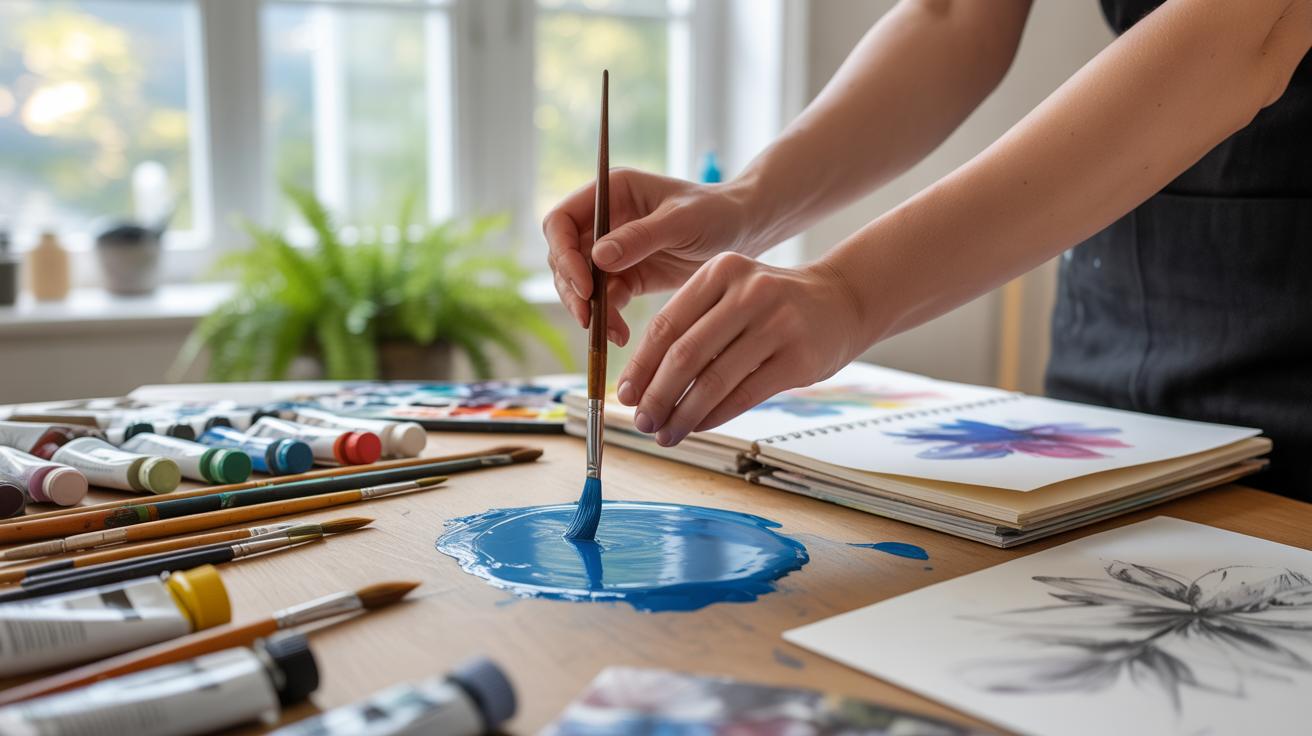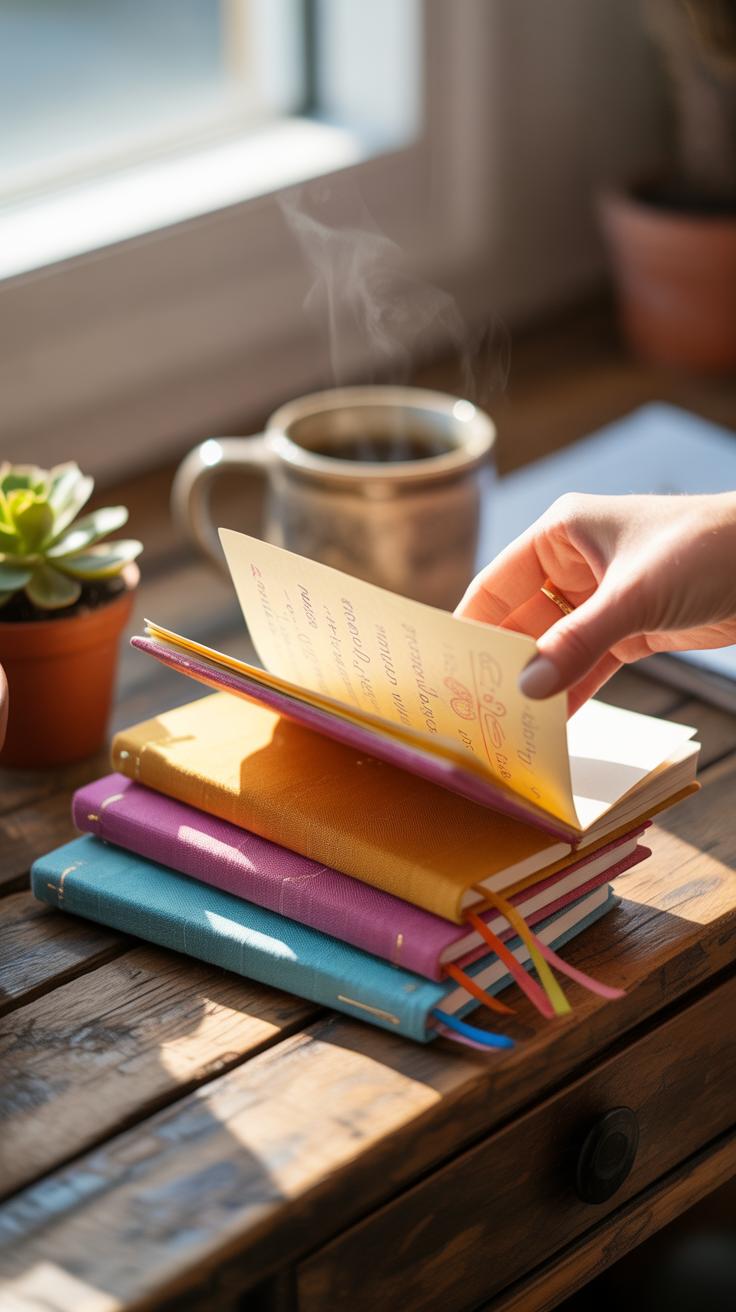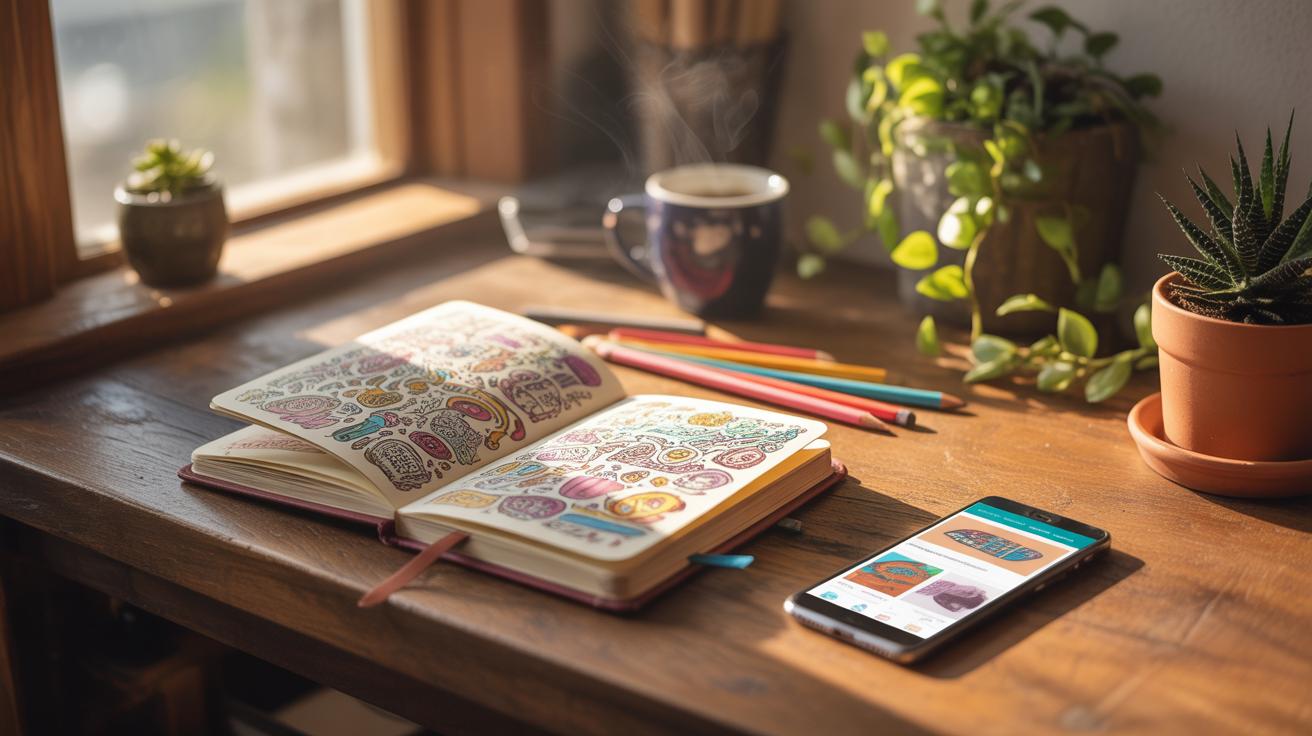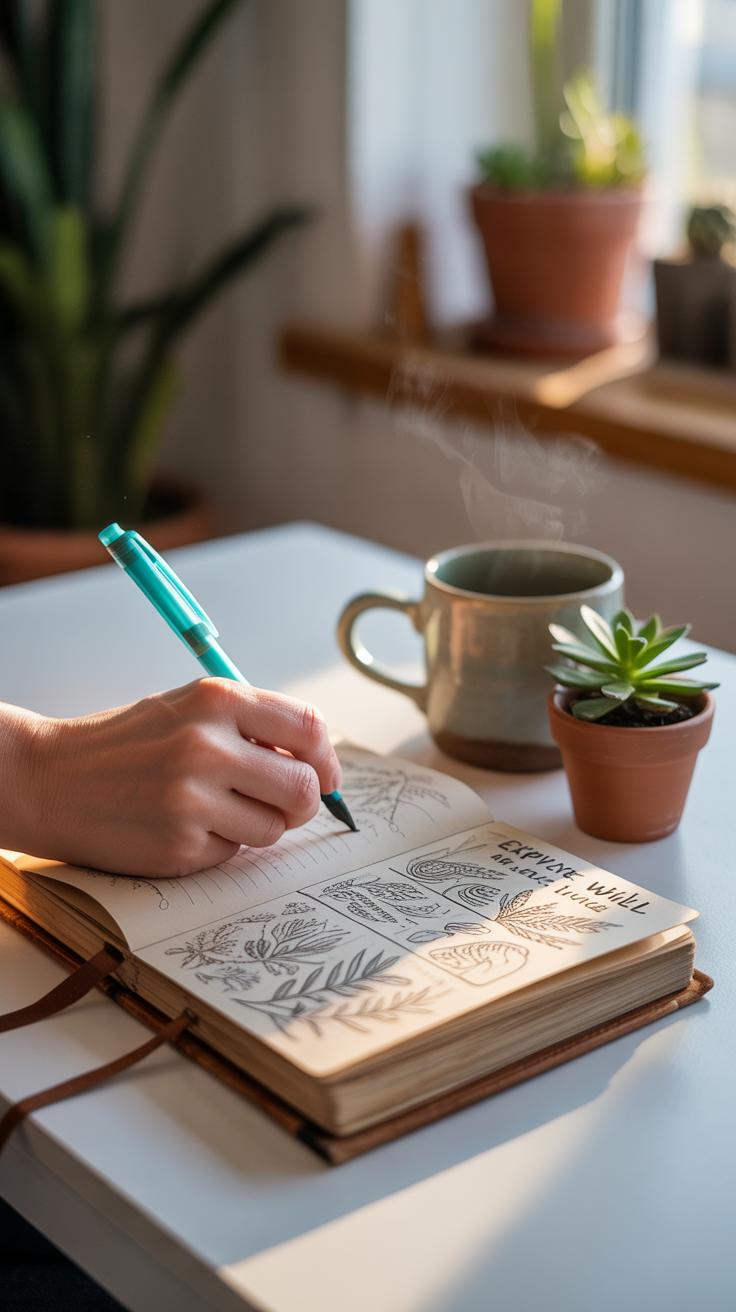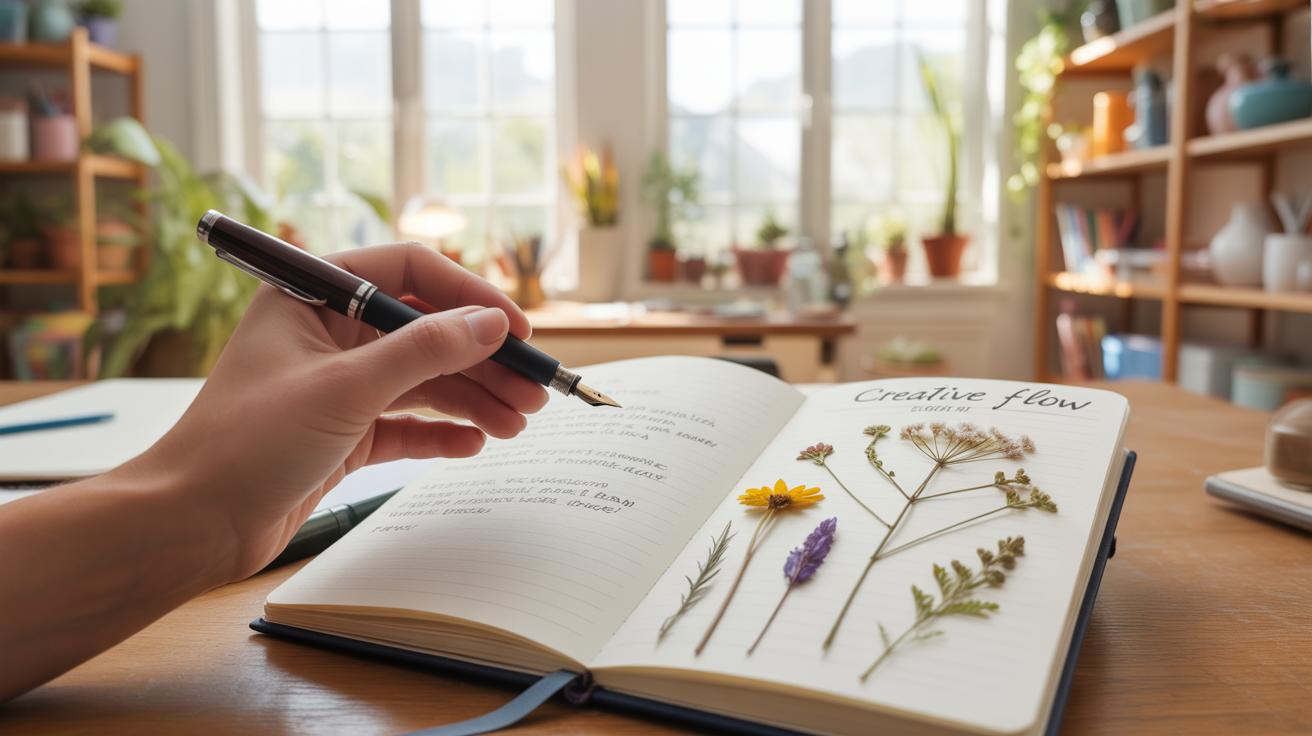
Handmade Journals Are Perfect for Your Creative Journaling Projects
Introduction
Handmade journals offer a unique way to enhance your creative journaling projects. These journals are crafted with care, often featuring artistic touches that set them apart from mass-produced notebooks. Using a handmade journal can inspire creativity and provide a personal connection to your journaling practice.
In this article, you will discover why handmade journals are excellent for creative writing and art. You will also learn practical ways to choose and use these journals to make your projects more meaningful. Let’s explore the benefits and how you can start your own creative journey with handmade journals.
Materials Used in Handmade Journals
When you pick up a handmade journal, the materials often stand out right away. The type of paper, the cover, even the binding can affect how you want to use it—sometimes in unexpected ways.
Take paper, for example. Some handmade journals use thick, textured paper that invites sketching or watercolor, while others have smoother sheets for neat handwriting or pen work. You might find it easier to write on certain paper types, but harder to blend colors or glue in mementos. Have you noticed how some papers bleed through or warp? With handmade journals, the choice of paper often feels more intentional, and that matters if you’re particular about how your tools interact with the pages.
Covers usually get a lot of attention. Many handmade journals feature leather, fabric, or heavy paper covers. Each influences how the journal feels in your hand and how durable it is during travel or everyday use. A soft leather cover might wear in beautifully, developing character, while a fabric cover could be lighter but more prone to stains. It’s about the kind of relationship you want with your journal—are you okay with a bit of wear, or do you want it to stay pristine?
Binding is another critical detail. Handmade journals often use stitches, sewn bindings, or other techniques that let the book open flat. That makes a big difference when you’re sketching or writing across a spread. Some bindings might be tighter or looser, affecting page durability and how comfortable the journal feels. You might find that you prefer a particular style after trying a few, or perhaps the binding influences when or where you jot down your ideas.
All these material choices shape how you interact with your journal. They aren’t just about looks. They guide your creative process, sometimes nudging you to explore different styles or mediums. The materials can encourage you to keep the journal close, or maybe make you hesitate before writing. Pay attention to how these details affect your journaling rhythm. Do you want to experiment with richer textures, or keep it simple and smooth for fast note-taking? Your choice might surprise you.
Materials Used in Handmade Journals
When you hold a handmade journal, you’re feeling more than paper and glue. The materials used shape your experience, even how you approach your creative journaling. Paper is, naturally, the heart of the journal. Common types include cotton rag, which feels thick and soft, perfect for ink and watercolor. Then there’s acid-free wood pulp paper, a bit thinner and a touch less durable but easier on the budget.
Each paper type responds differently depending on your tools. For example, a heavy Bristol or mixed-media paper supports layers of paint and collage, but might be crunchy under a pen. Lighter papers invite quick sketches or writing but may buckle with wet media. So, the choice matters more than you might expect.
Paper Types and Their Uses
Mostly, handmade journals feature:
- Cotton Rag Paper: Soft, resilient, and takes ink without bleed—ideal if you favor fountain pens or calligraphy.
- Mixed Media Paper: A bit textured, you can experiment with watercolors, markers, and pencils—great if your style varies.
- Recycled Paper: Usually rougher, sometimes with visible fibers. It adds character but might not suit very fine pen work.
I find that picking paper depends on whether you lean toward wet or dry media, or a combination. You might start with one and then realize you need a different texture for your next project.
Cover Materials
The covers affect durability and how your journal feels when you carry it around—or even just glance at it on your desk. Leather covers are popular for their sturdiness and natural aging, though they can be heavy, and some find them a bit formal or restrictive.
Fabric covers offer a softer, often colorful alternative. They can be more casual, sometimes easier to personalize with embroidery or prints. Yet, fabric may wear or stain faster, so it depends on your lifestyle if that’s a dealbreaker.
Then there are recycled or handmade paper covers. They appeal to environmentally conscious users and have a distinct, rustic look. They aren’t as tough, though, so you might need a sleeve or careful storage.
In the end, your chosen materials subtly guide how your journal lives with you. Every scratch, crease, or spill becomes part of its story—making those materials part of your creative journey, not just a container.
Choosing the Right Handmade Journal
Consider Your Creative Style
Before picking a handmade journal, think about how you plan to use it. Will you mostly write, sketch, or paint? Your choice should reflect that. For instance, if you lean toward watercolor or acrylic painting, thicker, textured paper is better—something that won’t buckle or bleed through easily. But if your focus is writing or light sketching, smooth paper might suit you well, letting your pen or pencil glide effortlessly.
Also, the size matters. Larger journals offer more space, which can be freeing if you like to create detailed art or extensive writing. On the other hand, smaller ones are portable, fitting easily into bags for journaling on the go. It’s a bit of a balancing act. Sometimes, I’ve picked a small journal for convenience, only to find the pages a bit cramped when I wanted to sketch. Maybe you’ll feel the same or prefer starting with something roomy.
Budget and Size Options
Your budget will guide your choices, but it doesn’t have to limit you too much. Handmade journals range from modestly priced to more exclusive pieces with high-end materials and unique bindings. If you’re just starting out or experimenting, smaller journals are often more affordable and easier to manage. They also tend to use less expensive paper and simpler covers.
When looking for quality options without breaking the bank, check out local craft fairs, online artisan shops, or independent bookstores. Sometimes, these places offer journals made with care that feel special without a heavy price tag. I once found a beautiful leather-bound journal at a craft fair for less than expected, and it quickly became my favorite.
Think about what matters most to you: size, paper quality, or cover design. Try to find that sweet spot where your creative habits and budget meet. It might take some trial and error, but that’s part of the fun, isn’t it?
Creative Journaling Ideas
Art and Sketch Journals
Using handmade journals as sketchbooks opens up a world of possibilities. The texture of the paper often encourages you to experiment—with pencil, ink, or watercolor. Sometimes, you might find the pages absorb paint differently, leading to unexpected effects. It’s worth trying mixed media: layering collage elements, pasting in scraps of fabric, or even stitching directly into the pages. You might hesitate at first, unsure if your journal can handle glue or paint, but that’s part of the fun—testing limits, seeing what works, and what doesn’t. Don’t worry about perfection here; instead, relish the rough edges of how the journal reacts.
Try setting mini challenges like sketching daily or working with a single color palette for a week. Or, you might devote a section purely to doodles and shapes. It’s a chance to capture fleeting ideas and spontaneous creativity without overthinking—something that often feels liberating in a handmade journal.
Writing and Reflection
Handmade journals also invite personal writing in ways digital tools rarely do. The weight and feel of the paper might slow you down, encourage longer pauses, or more thoughtful entries. You can use prompts to nudge yourself, but feel free to veer off track as ideas surface. For example, start with “What did I notice today?” or “A moment I almost forgot.” Then let your mind wander. You might write paragraphs one day and bullet points the next, depending on how your day unfolded.
Using your handmade journal to reflect can be as simple as crossing out passages, adding notes in margins, or sketching alongside your words. Sometimes, returning to older entries sparks new insights or inspiration. You may question if daily use is necessary—and honestly, some days you’ll skip—but even irregular sessions build a unique creative record. What would happen if you treated your journal as a space free from judgment, a place to test ideas without worrying about perfection or completion?
Maintaining Your Handmade Journal
Storage Tips
Where you keep your handmade journal matters quite a bit. A dry, cool spot away from direct sunlight is usually best. Sunlight can fade covers and weaken paper fibers over time—something you might notice only after months.
Think about vertical storage, like on a shelf, rather than stacking multiple notebooks on top of one another. Too much weight might warp the covers or damage the binding. If you prefer keeping your journal in a bag, try a protective sleeve or pouch to avoid scratches or accidental spills.
Dust also creeps in where you least expect it. Storing your journal in a fabric bag or box can limit buildup without suffocating the book. Still, it’s a bit of a balancing act depending on climate and your space. Maybe occasionally airing your journal helps—because mold or mildew is no friend to paper.
Handling for Longevity
How you open and close your handmade journal can make a difference. Try not to force it flat if the spine feels stiff; that strain often leads to cracks or loose pages. I know I sometimes forget this and end up with slightly warped pages.
Turning pages gently, rather than flipping aggressively, preserves their edges. For writing, pens that don’t bleed through stop ink from damaging the next page. Using tabs or bookmarks instead of folding corners helps keep pages neat, too.
Remember, every handmade journal has unique quirks. Paying attention to how it reacts to daily use lets you adjust your care routine. Do you notice your journal getting softer with time, or tighter? That feedback can guide how you handle it next.
Where to Buy Handmade Journals
Local Artisans and Markets
Buying handmade journals from local artisans or craft fairs brings a certain charm you don’t usually find elsewhere. You get to see the work up close—sometimes even meet the artist behind it—which adds a layer of connection to your journal. There’s something about holding a journal made with care, often using traditional techniques or unusual materials sourced nearby.
Markets often feature one-of-a-kind pieces that can’t be replicated easily, which makes your journal feel truly personal. Plus, supporting local artists encourages creativity to thrive nearby. You might even discover artists willing to customize a journal to your liking on the spot, which is pretty neat.
Still, these markets aren’t everywhere and the selection varies a lot. You might find yourself visiting multiple fairs or artisan shops before finding one that clicks. But it’s part of the experience—and I think it’s worth the effort sometimes, just for that unique find.
Online Marketplaces
The internet offers many platforms filled with handmade journals, making it easier to browse diverse styles from all over the world without leaving your home. Popular places to explore include Etsy, ArtFire, and even some sections on Amazon Handmade. Each site has countless creators showing their work, so you can find a journal that fits your style, whether rustic leather-bound or delicately embroidered covers.
Choosing a trusted seller matters here. Look for sellers with plenty of positive reviews and clear photos. Sometimes, descriptions can be vague—you might have to ask questions about materials or binding. Patience helps, since shipping times and packaging vary a lot depending on where the seller is located.
Online shopping is convenient, no doubt. But it’s also a bit of a gamble—you don’t touch the product first. Still, if you do your homework, you can find beautiful journals that arrive exactly as expected, maybe even better. It’s just a matter of knowing where and what to ask.
Customizing Your Handmade Journal
When it comes to making a handmade journal truly yours, small touches can make a big difference. You might start by decorating the cover—maybe with fabric scraps, pressed flowers, or hand-drawn designs. Some people like to sew in colorful ribbons or attach metal charms to the spine. These details don’t just look nice; they can make the journal feel more inviting to open.
Bookmarks are another handy addition. You could use a simple ribbon or create a sliding paper tab. Sometimes I’ve added little tassels made from yarn—nothing fancy, but enough to quickly find the page I’m working on. Stickers also offer a quick way to personalize pages or the cover without a lot of fuss. They’re great when you want a pop of color or to mark important spots in your writing.
Besides decoration, consider practical tweaks. Adding pockets inside covers gives you a spot for loose notes or keepsakes. Tabs can separate sections, which is helpful if your journaling covers different themes—like daily reflections, sketches, or quotes. You can make these tabs from cardstock or fabric, attaching them with glue or sewing. Some folks add envelopes or folded pages for extra storage, which can turn your journal into a mini archive of your ideas and inspirations.
Building a Journaling Routine
Creating a steady journaling habit with your handmade journal can feel tricky at first, but small steps help more than grand plans. You might find it easier to aim for just a few lines or doodles each day rather than a full page jam-packed with thoughts. Those small goals—not overwhelming—can keep you coming back without feeling stuck.
Setting a regular time for your journaling also helps. Maybe it’s a quiet moment with morning coffee or a few minutes before bed. Consistency builds comfort. Yet, sometimes life gets in the way, and missing a day doesn’t mean you’ve failed, just try again when you can.
Setting Goals and Times
Try jotting down what you want from your journaling habit, but keep goals simple. Examples might be:
- Write one thing you’re grateful for each day.
- Sketch a quick idea or mood every other day.
- Use your journal to explore one creative prompt weekly.
Attach those goals to a time you can stick to—even if it’s only five minutes. Over time, that little ritual can spark something bigger, or at least keep your journal alive.
Staying Inspired
Finding fresh reasons to open your handmade journal can be harder than it sounds. Sometimes, flipping through previous pages or looking at your own layouts offers unexpected ideas. Other times, questions like “What made me smile today?” or “What colors do I feel like using?” can nudge you forward.
If motivation slips, invite a bit of curiosity. Could you try a new pen or glue in a found object? Maybe write a letter to yourself or paste a snippet of a poem. Inspiration isn’t always waiting around; sometimes you have to poke it a little.
Remember, your handmade journal is more than a blank book—it’s a companion that grows with your habits. You don’t need perfect pages, just your willingness to return. What might happen if you simply commit to two minutes tomorrow?
Sharing Your Handmade Journaling Journey
Showing your handmade journals to others can feel a bit vulnerable, yet it opens doors to new insights. When you share your pages or the stories behind them, you invite feedback that might spark fresh ideas or push your creativity in unexpected directions. It’s not about seeking approval but finding ways to grow and expand your personal journey.
Have you ever hesitated to share because your work feels too private or unfinished? Maybe sharing with the right audience makes all the difference. Sometimes, just describing your process or challenges can lead to encouragement that keeps you going.
Online Communities
There are plenty of places online where journaling fans gather, offering a space to swap tips, show off pages, or get inspired. Sites like Instagram and Pinterest are popular for sharing visual journaling content. Facebook hosts groups like “Creative Journal Circle” or “Handmade Journal Makers” where members upload photos and discuss techniques. Reddit’s r/Journaling is surprisingly active, too, with threads about supplies, prompts, or even how to fix messy pages.
These communities aren’t simply for sharing perfection; they welcome raw, experimental work. You might find someone struggling with the same thing or discover a tool you hadn’t tried before. It helps to be part of a group where mistakes are just steps forward.
Journaling with Friends
Writing alongside friends changes the game. Whether it’s a weekly meet-up or a casual chat over coffee, journaling together adds layers of support and motivation. You see others’ creative choices and that can push you out of a rut. Plus, it makes the process less lonely—even if your journal is your private space, knowing someone else is creating too makes a difference.
Journaling clubs often offer prompts, challenges, or constructive feedback. These shared experiences build camaraderie and keep journaling fun rather than a chore. Have you considered inviting a friend to start journaling with you? It might be the nudge you both need to stick with it or see things differently.
Conclusions
Using handmade journals can transform your creative journaling practice. They add a special touch that standard notebooks cannot match. By choosing a journal that feels personal and unique, you can find more joy in writing, drawing, or planning your thoughts and ideas.
Your creative projects will feel more connected and inspiring. Handmade journals encourage you to express yourself freely and enjoy the process. Start exploring handmade journals today and see how they can support your creativity and growth.











